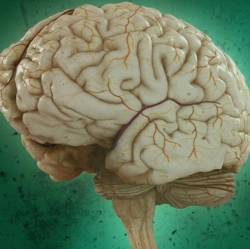
Computing is currently based on binary (Boolean) logic, but a new type of computing architecture created by electrical engineers at Penn State stores information in the frequencies and phases of periodic signals and could work more like the human brain.
It would use a fraction of the energy necessary for today’s computers, according to the engineers. To achieve the new architecture, they used a thin film of vanadium oxide on a titanium dioxide substrate to create an oscillating switch. Vanadium dioxide is called a “wacky oxide” because it transitions from a conducting metal to an insulating semiconductor and vice versa with the addition of a small amount of heat or electrical current.
Using a standard electrical engineering trick, Nikhil Shukla, graduate student in electrical engineering, added a series resistor to the oxide device to stabilize oscillations. When he added a second similar oscillating system, he discovered that, over time, the two devices began to oscillate in unison, or synchronize.
This coupled system could provide the basis for non-Boolean computing. Shukla worked with Suman Datta, professor of electrical engineering, and co-advisor Roman Engel-Herbert, assistant professor of materials science and engineering, Penn State.
